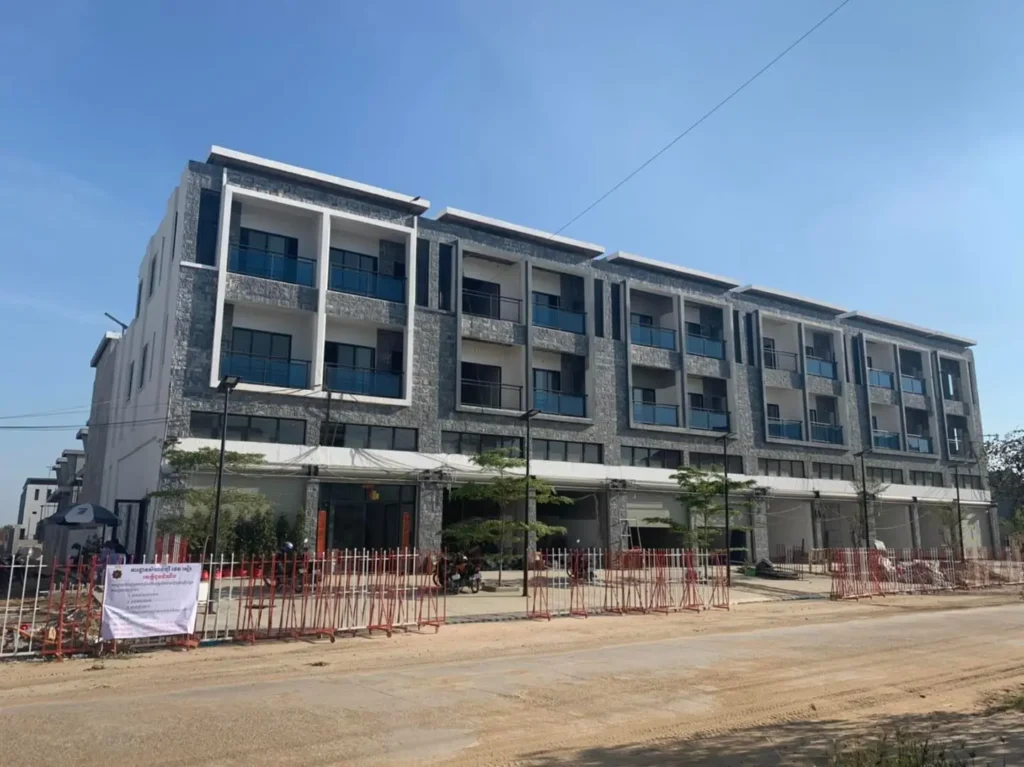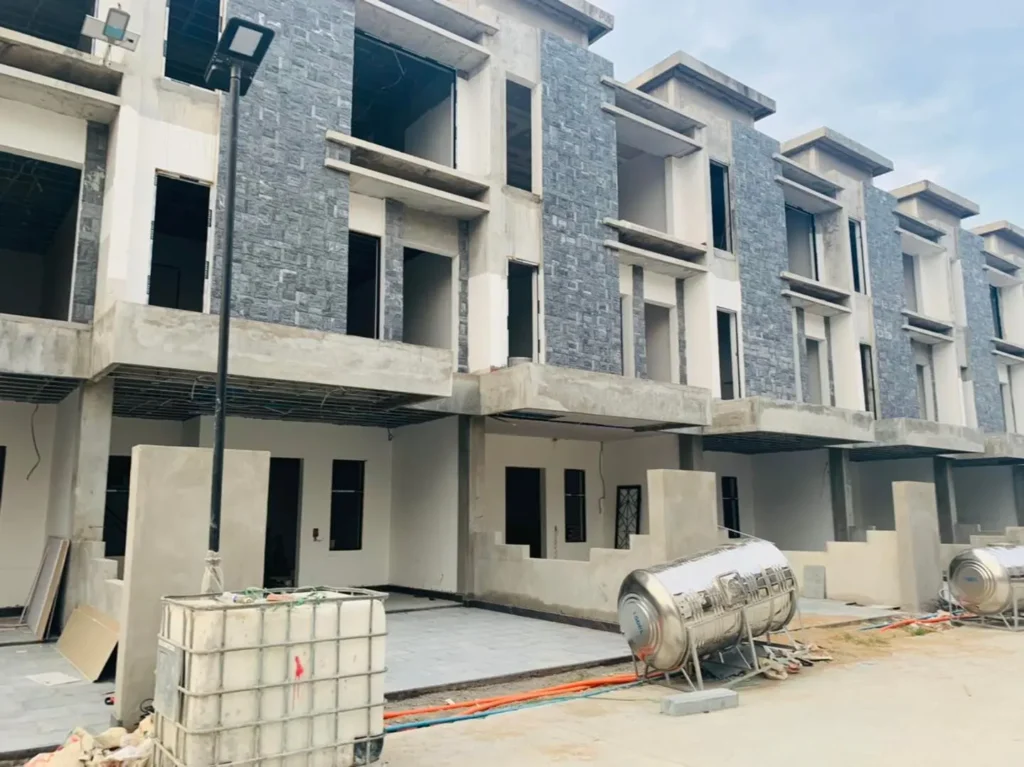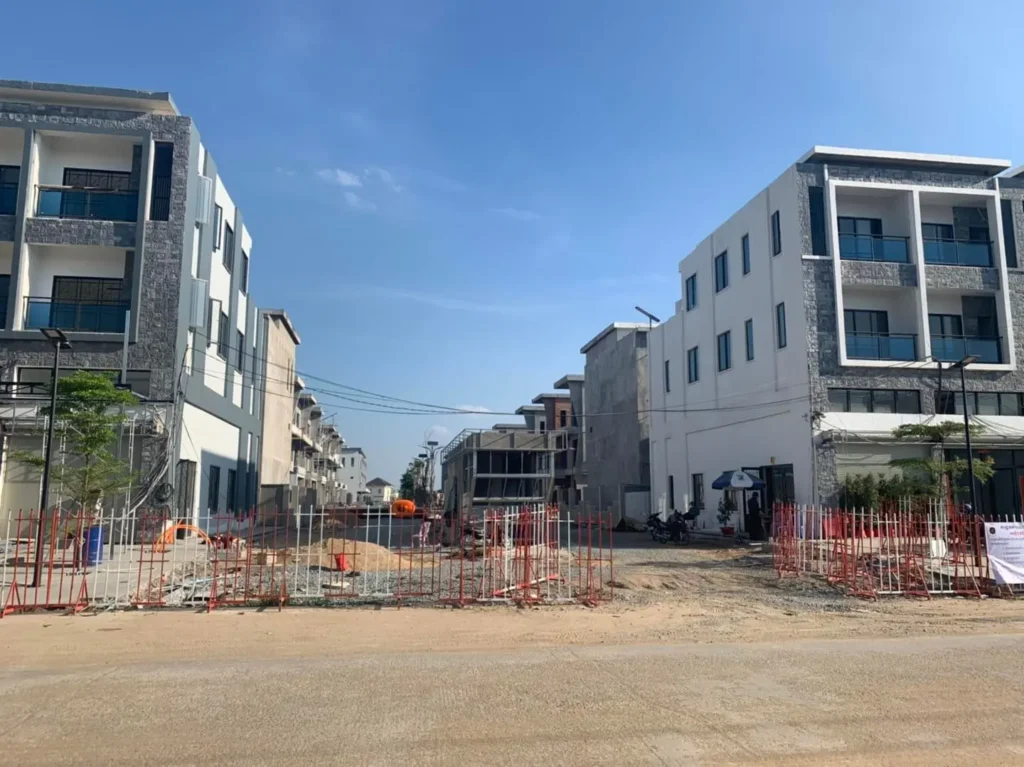Abstract
This case study examines a unified housing construction project in an emerging urban district of Cambodia. The project comprehensively deployed SRESKY BASALT Series Solar Street Lights, providing a forward-looking off-grid lighting solution for public areas. Beginning with the project’s unique context—the lighting system being installed during the construction phase—the report explores how the solution addresses infrastructure challenges in Cambodia’s developing cities. Through detailed analysis of the technical approach, implementation process, and project outcomes, this report highlights the system’s contributions in technological adaptability, social welfare enhancement, and sustainable development. It presents an innovative, replicable success model for urbanization in developing regions worldwide.
1. Project Background and Needs Analysis
1.1 Urbanization Context
Cambodia is undergoing rapid urbanization. According to the World Bank, Cambodia’s urban population grew from around 2 million in 2000 to over 6 million in 2023, with the urbanization rate projected to exceed 30% by 2030. This trend has driven the development of unified housing complexes and community projects but also exposed infrastructure bottlenecks, particularly in electricity supply.
Located in a key development zone on the outskirts of Phnom Penh, this project covers over 50,000 square meters of floor area. It aims to provide modern housing for low- to middle-income groups, benefiting thousands of residents.
1.2 Core Challenge: Lagging Electrical Infrastructure
In newly developed districts, municipal grid access often lags behind construction progress. The urgent challenge was to provide reliable, safe nighttime lighting for both the construction site and future community before the grid was connected—affecting construction efficiency and residents’ quality of life.
1.3 Specific Requirements
-
Construction Site Security Lighting: Nighttime work requires high-intensity lighting for worker safety and theft prevention. The Ministry of Labor reports that over 20% of construction accidents occur at night. The system needed to be instantly operational without external power.
-
Permanent Community Lighting: Post-completion, the community required a stable, low-cost, maintenance-free public lighting system. Cambodian households spend 5%–10% of monthly income on electricity; a zero-electricity solution would greatly reduce operating costs.
-
Modern Urban Aesthetics: Fixtures had to harmonize with contemporary architecture featuring minimalist lines and sustainable materials.
-
Climate Challenges: Cambodia’s tropical climate brings temperatures of 28°C–35°C and rainfall of up to 2,000 mm during the rainy season (May–October). Lighting equipment had to withstand heat, humidity, and flooding. According to ADB, high temperatures shorten battery life by 30%, and poor waterproofing increases failure rates.
After a competitive evaluation, the SRESKY BASALT Series was chosen for its off-grid design and proven ability to meet these challenges.
2. Technical Solution Design
To meet requirements during both construction and long-term community use, the project selected SRESKY BASALT Series Integrated Solar Street Lights. With strong technical adaptability for tropical environments, SRESKY has established reliability in multiple Southeast Asian projects.
2.1 Core Product: SRESKY BASALT Series Solar Street Lights
The BASALT Series is engineered for outdoor public lighting, integrating solar panels, lithium batteries, and LED light sources into a single unit. Using OSRAM LED chips, it delivers:
-
230 lm/W luminous efficacy
-
4000K color temperature
-
Ra > 70 for natural illumination
2.2 Technical Advantages
-
Off-Grid, Plug-and-Play: Requires no grid connection. Solar panels and lithium batteries enable autonomous operation (charging time: 8.4 hours; discharge range: -20°C to +60°C). This ensures immediate lighting during any construction stage.
-
TCS Temperature Control Technology: Monitors and regulates battery temperature for safe discharge at 60°C, extending lifespan by 1.5 times. Mitigates Cambodia’s high-heat battery degradation.
-
ALS 2.2 Adaptive Lighting System: Adjusts power output based on weather, ensuring over 10 days of continuous lighting during rainy periods—30% more efficient than traditional systems.
-
Durability: Aluminum alloy frame resists hurricanes, IP65 waterproofing and IK08 impact resistance withstand flooding and construction impacts.
-
Modern Aesthetics & Efficiency: Clean design complements modern architecture. PIR motion sensing (120°, 8 m range) supports modes like M2 (5 hours at 100% brightness + subsequent 25% with PIR boost to 70%), saving up to 50% energy. Built-in FAS fault alarm ensures easy maintenance.
These features position the BASALT Series as a standout choice for Cambodia’s urban housing projects, with proven performance in similar projects in Thailand and Vietnam.
3. Project Implementation and Execution
This project innovatively integrated lighting installation with building construction, demonstrating the flexibility of solar solutions. The entire installation process took only one week, compared to 1–2 months for traditional grid systems.
-
Pre-emptive Installation: Lights were installed during roof-topping and exterior wall construction, prioritizing perimeters and main access roads without waiting for grid access.
-
Interference-Free Construction: A streamlined workflow (foundation pits → C20 concrete anchors → on-site luminaire assembly → pole installation) required no trenching or cabling, avoiding conflicts with utilities.
-
Immediate Value: Once installed, lights began charging and illuminating automatically at dusk. Field evidence showed BASALT units providing nighttime security and supporting 24/7 construction, even before building windows were installed.
SRESKY engineers provided on-site calibration of PIR and ALS functions, ensuring optimal performance.
4. Project Outcomes and Impact
4.1 Dual-Phase Value
-
Construction Phase: Improved site safety reduced theft rates by 15%, while zero electricity costs lowered project expenses.
-
Operational Phase: Transitioned seamlessly to community lighting, delivering uniform brightness (>20 lux). Nighttime activities increased by 20%, according to property management reports.
4.2 Broader Social Impact
-
Accelerated Urban Development: The “lighting-first” model addressed infrastructure gaps and shortened development cycles by up to 10% (GGGI).
-
Improved Livelihoods: Reliable public lighting enhanced quality of life, aligning with UN SDGs.
4.3 Sustainability
-
Energy Independence: Tens of thousands of USD in annual electricity savings.
-
Carbon Reduction: Approximately 30 tons of CO₂ emissions reduced annually.
Conclusion
The Cambodia urban housing complex project successfully overcame power infrastructure limitations by deploying SRESKY BASALT Series Solar Street Lights and integrating installation into the construction process. This proactive approach transformed challenges into an opportunity to demonstrate modernity, sustainability, and social responsibility.
This case highlights how advanced solar lighting can accelerate urbanization and enable leapfrog development in emerging economies. For project developers, the BASALT Series delivers clear advantages in efficiency, sustainability, and long-term value.
Table of Contents


